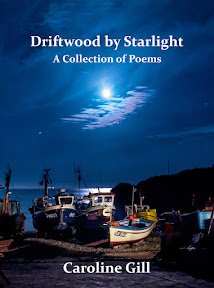 I am very grateful to representatives of Wicken Fen and Buglife (The Invertebrate Conservation Trust) who have helped me to find out about this beetle. Sadly, perhaps, it is not the rare Crucifix Ground Beetle. It seems instead to be the Necrophorus vespilloides, a member of the Silphidae family or burying beetle.
I am very grateful to representatives of Wicken Fen and Buglife (The Invertebrate Conservation Trust) who have helped me to find out about this beetle. Sadly, perhaps, it is not the rare Crucifix Ground Beetle. It seems instead to be the Necrophorus vespilloides, a member of the Silphidae family or burying beetle.Matt Shadlow of Buglife replied to me with the following message:
Dear Caroline
Unfortunately this is not a Crucifix beetle (Panagaeus cruxmajor).
There is a certain resemblance, but the photo is a much bigger species,
a type of burying beetle. While the Crucifix beetle (Panagaeus
cruxmajor) and its close relative Panagaeus bipustulatus (which is
commoner but still very rarely encountered) are predators of small
insects or snails, the beetle you have seen is associated with dead
animals, most commonly mice. A male and female burying beetle will meet
up at a carcass and form a bond, they then defend the mouse from rivals
as they dig out the soil form underneath the animal so that it sinks
underground. At the same time the beetles allies the little mites that
they carry around jump off and eat any fly eggs that have been laid on
the body. Once it is underground the beetles create a chamber on top of
the mouse and the female lays her eggs. When the larvae hatch out they
sit in a 'nest' and beg for food. The male and female beetles help
their young by partially digesting the mouse and feeding it to their
offspring. Eventually the larvae pupate and the parents leave.
These are four species of burying beetle (Nicrophorus spp.) with colour
patterns like this and we would need to see the colour of the antennae
and the shape of the legs to know which it is.
You are not the first person to get excited by potentially finding the
Crucifix beetle.
I hope this is useful, if you would like to support our work conserving
populations of endangered invertebrates please go to
http://www.buglife.org.uk/joinus/
Cheers
Matt Shardlow
Director
Buglife - The Invertebrate Conservation Trust
170A Park Road
Peterborough PE1 2UF
01733 201210
079 21 700151
www.buglife.org.uk
Conserving the small things that run the world.
Matt thought I would be interested to hear about Darwin's encounter with a TRUE Crucifix Ground Beetle in 1846. You can read the 'unsavoury' account in Letter 109 on the Darwin Correspondence Project site.
STOP PRESS: a message from Sean McHugh, Communications Officer of Wales Biodiversity Partnership (published here with his permission):
Caroline
Thank you for your recent email. I submitted the details to two experts
and here is their conclusion:
'I believe it is a sexton beetle, Nicrophorus humator, similar markings
to the Crucifix ground beetle Panagaeus crux-major, but the latter is a
saltmarsh/fen specialist, only known in Wales from either side of the
Burry Inlet, and not recorded on the Gower side since 1912'.
'Sexton Beetle. Although the elytra markings are similar there is also a
white stripe on the thorax (the thorax is also a different shape) and
there's a dead mouse there'.
A key observation is the dead mouse; Nicrophorus humator lays eggs
beside corpses of small mammals and birds which she buries.
However, it's a great field observation & we need more insect
observations to be reported. Take a look at the Local record Centre
sites, for the Swansea area it is covered by Sewbrec
(http://www.sewbrec.org.uk/) where you can submit online records and
find out more about recording & training. Also, take a look at our
website (www.biodiversitywales.org.uk) to see how you can become
involved in Welsh Wildlife.
Regards
Sean
Sean McHugh
WBP Communications Officer
Wales Biodiversity Partnership
c/o Wildlife Trust of South & West Wales, Fountain Road, Tondu, Bridgend, CF32 0EH
E-bost/e-mail: s.mchugh@welshwildlife.org
So the picture has changed, and I can no longer say that I discovered a Crucifix Ground Beetle, but at least I now know more about it. Incidentally, I thought the name 'burying beetle' rang a bell from somewhere. Those who know me will be familiar with my passion for 'things Cornish'. It suddenly dawned on me that there is a delightful book, set in St Ives, called 'The Burying Beetle'. My posting has come full circle - and has rotated around to literature once more!
Burying Beetle sites:
- Dr Sheena Cotter at the University of Cambridge
- 'The Burying Beeetle' by Ann Kelley, Luath Press Limited











No comments:
Post a Comment